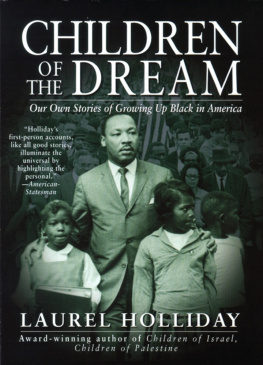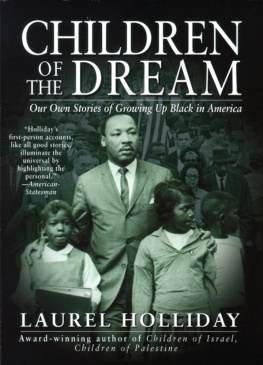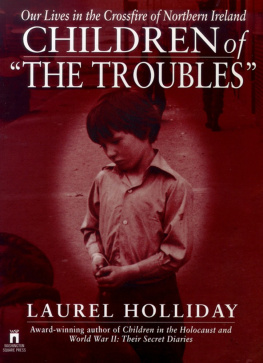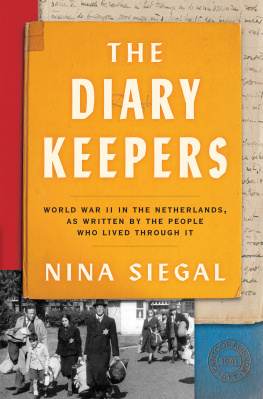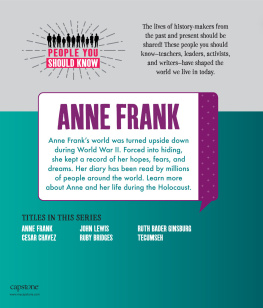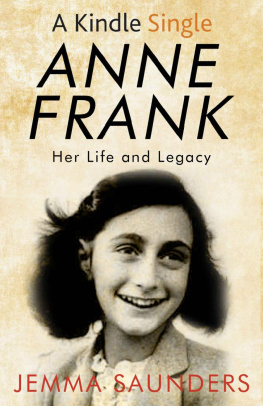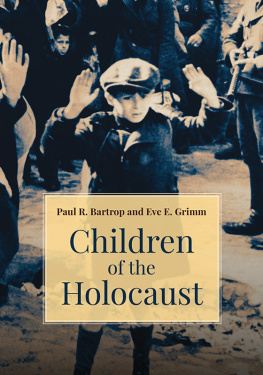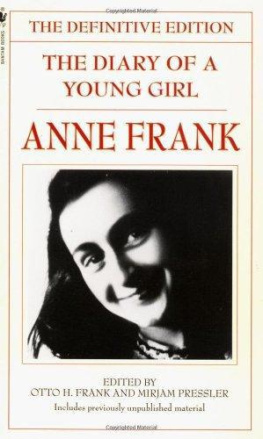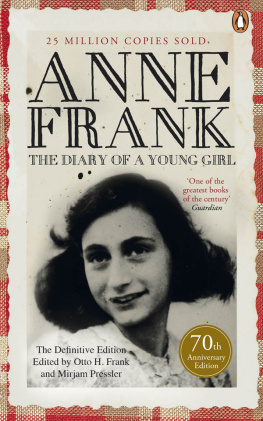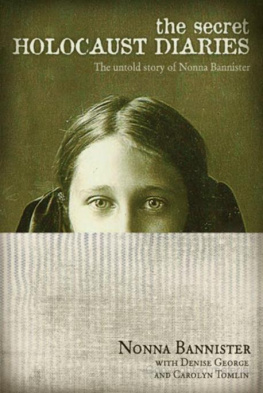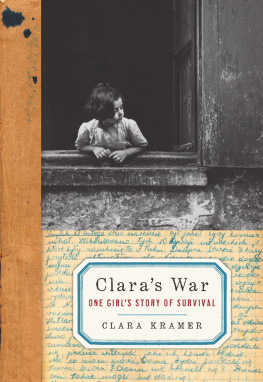
Yuen Lui Studies
LAUREL HOLLIDAY formerly a college teacher, editor, and psychotherapist, now writes full time in Seattle. She is the award-winning author of CHILDREN IN THE HOLOCAUST AND WORLD WAR II: Their Secret Diaries and Children of The Troubles: Our Lives in the Crossfire of Northern Ireland. Children of Israel Children of Palestine: Our Own True Stories is the third book in the Children of Conflict series. Ms. Holliday is currently at work on the next anthology in the series, Children of the Dream: Growing Up Black in America.
The voices of the one million children who died in the Holocaust have been silenced, but their diaries, poems, and stories keep their memories alive.
Publishers Weekly
Anne Frank was not the only child to keep a journal in wartime. CHILDREN IN THE HOLOCAUST AND WORLD WAR II: THEIR SECRET DIARIES... has collected often heart-wrenching journal entries from youngsters who lived all over Europe.
Allan Fisk, Detroit News
Thank you for downloading this Atria Books eBook.
Join our mailing list and get updates on new releases, deals, bonus content and other great books from Atria Books and Simon & Schuster.
C LICK H ERE T O S IGN U P
or visit us online to sign up at
eBookNews.SimonandSchuster.com
We hope you enjoyed reading this Atria Books eBook.
Join our mailing list and get updates on new releases, deals, bonus content and other great books from Atria Books and Simon & Schuster.
C LICK H ERE T O S IGN U P
or visit us online to sign up at
eBookNews.SimonandSchuster.com
I think of nothing: not what I am losing, not what I have just lost, not what is in store for me. I do not see the streets before me, the people passing by. I only feel that I am terribly weary, I feel that an insult, a hurt is burning inside me.
Y ITSKHOK R UDASHEVSKI
Vilna Ghetto
Age 14
Also by Laurel Holliday
The Children of Conflict series:
Children of The Troubles: Our Lives in the Crossfire of Northern Ireland
Children of Israel, Children of Palestine: Our Own True Stories
Children of the Dream: Growing Up Black in America
From Heroic Heart: The Diary and Letters of Kim Malthe-Bruun by Kim Malthe-Bruun. Copyright 1955 by Random House, Inc. Reprinted by permission of Random House, Inc.
From Hannah Senesh: Her Life and Diary by Hannah Senesh, trans, by Marta Cohn. Intro by Abba Eban. Text copyright 1971 by Nigel Marsh. Introduction copyright 1972 by Schocken Books, Inc. Reprinted by permission of Schocken Books, published by Pantheon Books, a division of Random House, Inc.

A Washington Square Press Publication of
POCKET BOOKS, a division of Simon & Schuster Inc.
1230 Avenue of the Americas, New York, NY 10020
www.SimonandSchuster.com
Copyright 1995 by Laurel Holliday
Frontispiece map based upon a map by Robert Jan van Pelt and appearing in Children with a Star: Jewish Youth in Nazi Europe by Debrah Dwork (Yale University Press, 1991, pp. 338-39).
All rights reserved, including the right to reproduce this book of portions thereof in any form whatsoever. For information address Pocket Books, 1230 Avenue of the Americas, New York, NY 10020
Library of Congress Cataloging-in-Publication Data
Children in the Holocaust and World War II: their secret diaries/ [compiled by] Laurel Holliday.
p. cm.
Includes bibliographical references
ISBN: 0-671-52055-5
ISBN: 9-7814-3912-197-9 (eBook)
1. Holocaust, Jewish (1939-1945)Personal narratives. 2. Jewish childrenDiaries. I. Holliday, Laurel, 1946-.
D804.3.C45
940.5318dc20
95-3211
CIP
WASHINGTON SQUARE PRESS and colophon are registered trademarks of Simon & Schuster Inc.
Cover design by Joanna Riesman, front cover photo of Yitskhok Radashevski
Acknowledgments
I would like to thank the Interlibrary Loan staffs of the University of Washingtons Suzzalo Library and the Seattle Public Library and the Ballard Branch librarians who have assisted me by obtaining hundreds of books from around the world. I would also like to thank librarian Rebecca Alexander of Temple de Hirsch Sinai, in Seattle, for her help with finding childrens diaries and with Hebrew translation.
I would like to acknowledge the contribution of Christine Lienhart Nelson to this anthology. Her patient help with selecting excerpts from Macha Rolnikas diary and translating it from the French is very much appreciated.
And, finally, I would like to thank my agent, Sarah Jane Freymann, and my editor, Paul McCarthy, for their love of the childrens diaries, their belief in the importance of this anthology, and their encouragement and support through the publishing process.
Contents
Introduction
This is the first anthology of the diaries children wrote during World War II and the Holocaust. From the ghettos of Lithuania, Poland, Latvia, and Hungary, to the Terezn and Stutthof and Janowska concentration camps, to the bombedout streets of London and Rotterdam, to a Nazi prison in Copenhagen, these diaries tell us what it was like for children to live each day with the knowledge that it could be their last.
A third of the diarists were twelve years old or younger when they decided to record the historic events that would so drastically change their own lives and those of everyone around them. The nine boys and fourteen girls in this collection, Jews and gentiles alike, described what the Nazis did to their families and their towns without guarding their feelings or mincing words. They wrote with courageeven humorand they wrote very well.
Unfortunately, many of the childrens diaries have been all but lost to history. Either they were never published in book form or there are only a handful of copies left in the worlds major libraries. It is astonishing that, even though most of them are as powerful and well-written as Anne Franks diary, they have remained obscure while hers has been thought of as the child diary of the Holocaust.
Perhaps it is so painful to think about the impact of the war on childrenparticularly their mass executionsthat we have not wanted to read about it, even when that has meant refusing to hear from the children themselves. Maybe it was as much as we could bear to designate Anne Frank the representative child of the Holocaust and to think, then, only of her when we thought about children in World War II.
But, in some ways, Anne Frank was not representative of children in the war and the Holocaust. Because she was in hiding, she did not experience life in the streets, the ghettos, the concentration camps, as it was lived by millions of children throughout Europe.
Through these boys and girls writings we learn about the external realities of childrens wartime lives as well as their innermost thoughts and feelings. The diaries portray what it was like to live with constant Gestapo harassment, the daily grind of searching for the basic necessities, and the terror of seeing friends and relatives deported to their deaths. And they depict the ways some of these children fought back against their oppressors, not the least of which was to write what they personally witnessed of Nazi brutality as a historical record.
To write as frequently and as much as these children wrote was no simple matter. To begin with, they needed to find materials for writing. Pens and paper were difficult to obtain in the concentration camps and ghettos. Those children who were under Nazi guard also needed to find a place where they would not be observed writing. And, once they had written their stories, the children had to find suitable hiding places for their work so that it would not be confiscated during Gestapo searches.
Next page
